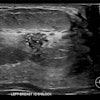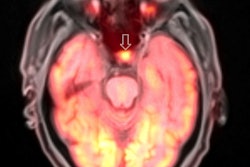
In a radiologist's final report, failure to provide adequate details about important or unexpected findings considered to be actionable is a leading cause of malpractice claims, attendees were warned at last week's Management in Radiology (MIR) congress in Bologna, Italy.
"These findings go beyond routine communication," said Dr. Charles E. Kahn, professor of radiology at Medical College of Wisconsin in Milwaukee, U.S., adding that a radiologist must provide an answer to the referrer's question. "Communicating them [findings] in an appropriate manner is a matter of ethics, quality of service, and professionalism."
 Communicating actionable findings enables radiologists to become more visible, according to Dr. Charles E. Kahn.
Communicating actionable findings enables radiologists to become more visible, according to Dr. Charles E. Kahn.There is no standard way of communicating actionable findings, and radiologists may find this cumbersome, as in cases where the professional in charge cannot be reached by phone and where you have to find someone else as a surrogate to close the loop, he explained.
"It is part of the professional responsibility of the radiologist to carry out that communication," Kahn stressed. "Communicating an important finding is as important as identifying it. Enlisting, or engaging, the patient as an active member of his or her own care team may be another important option for findings of long-term impact."
By definition, these findings require additional, special communication -- more than just the standard written report -- and they involve extra time and effort, he noted. Recently a working group of the American College of Radiology (ACR) has defined three categories of actionable findings, including discrepancies regarding a preliminary interpretation or the correction of a prior final report:
Category 1 comprises critical medical findings that may cause significant harm in the short term, such as an acute pulmonary embolism or an ovarian torsion. These types of findings require immediate attention on the part of the referrer, e.g. an emergency physician. Direct verbal communication to the ordering clinician should take place "within minutes," and documentation of the communication may be required by the policy of the organization or, in the U.S., by the Joint Commission.
Category 2 refers to findings that are less urgent and severe than category 1, such as pneumonia or a clinically significant mass, tumor, or infection. Direct verbal communication is required "within hours." The preliminary report can be sent by secure fax, or the finalized report made available promptly.
Category 3 findings are "incidentalomas" or unexpected findings. They do not require immediate action, and long-term follow-up imaging may be necessary. Suspected cancers, e.g. lung nodules, would fall into this category, according to Kahn. In cases where a patient has a family physician or general practitioner (GP), this professional will typically serve as the keeper of that information, and the challenge lies in the time needed to reach the professional in charge and to ensure that he or she receives that communication and acts on it appropriately.
"We as radiologists should consider this communication as an additional opportunity to become more visible to our referring peers and to our patients," he stated. "It can help illustrate that we have a role to play in the care of patients. And by working to make sure that the findings identified in a radiologist's report are made known to our colleagues, and to ensure they act appropriately, is a part of our duty toward our patients. The potential threat of malpractice litigation should not be the motivating aspect behind our efforts, but instead our wish to do what is best for our patients."
Even if behavioral norms and cultures may differ between countries and health systems, this urge will appeal to radiologists, no matter what region they are active in, according to Kahn.
Organizations need to establish standard operating procedures, and information systems can help to achieve these communication goals, he continued. Radiologists using an alert system will record their messages; the system will then trace the referring clinician and escalate if no timely response is received. View alert codes are helpful features in some electronic health record systems, and actionable-finding tracking systems allow for critical results reporting and include follow-up reminders.
"In general, IT is most useful for category 3 findings which require delayed action and where the clinician who needs to take action may not be the one addressing the acute problem," Kahn concluded, noting that radiologists should decide in favor of a system that can be tailored to their workflow.

















